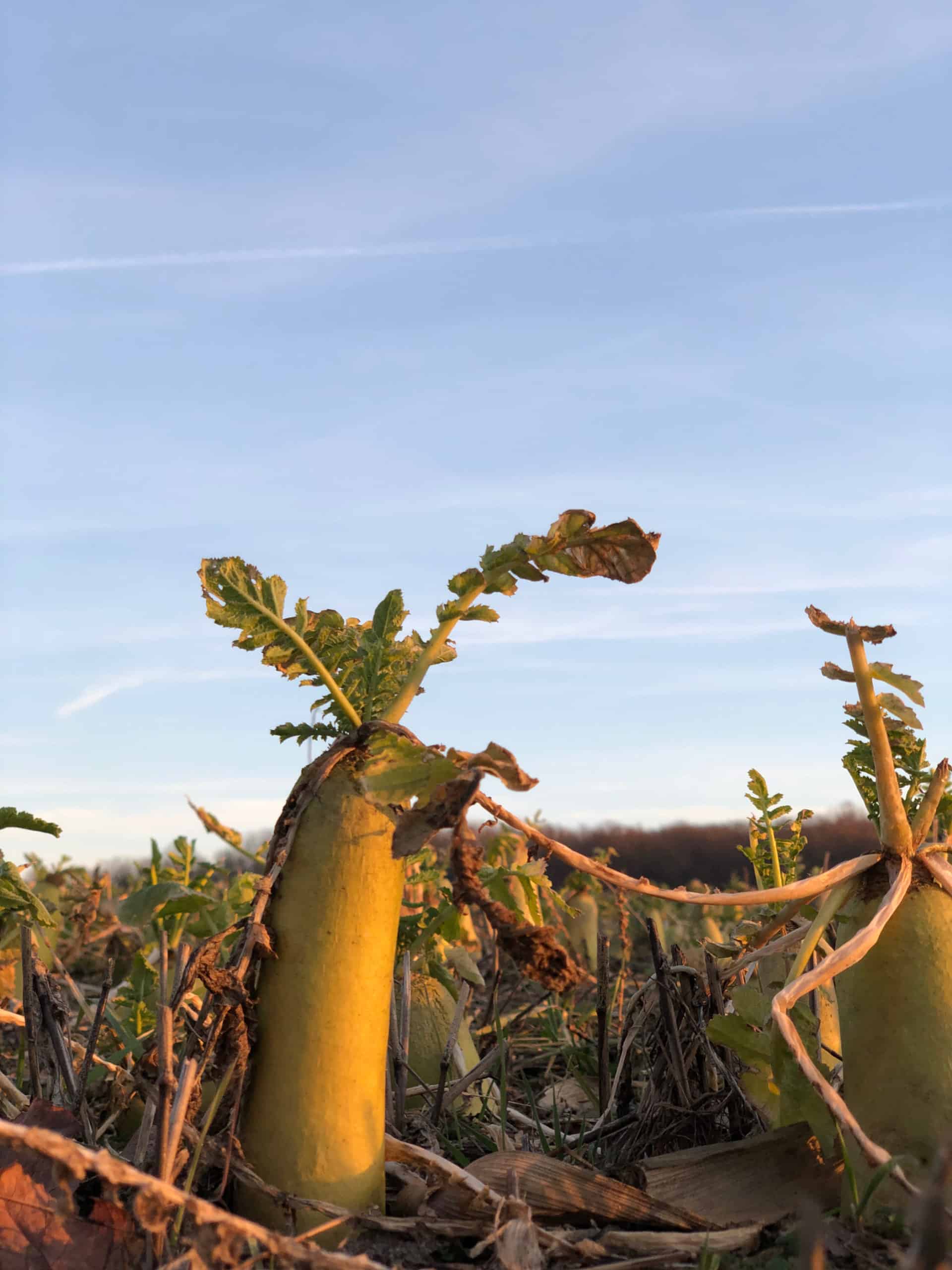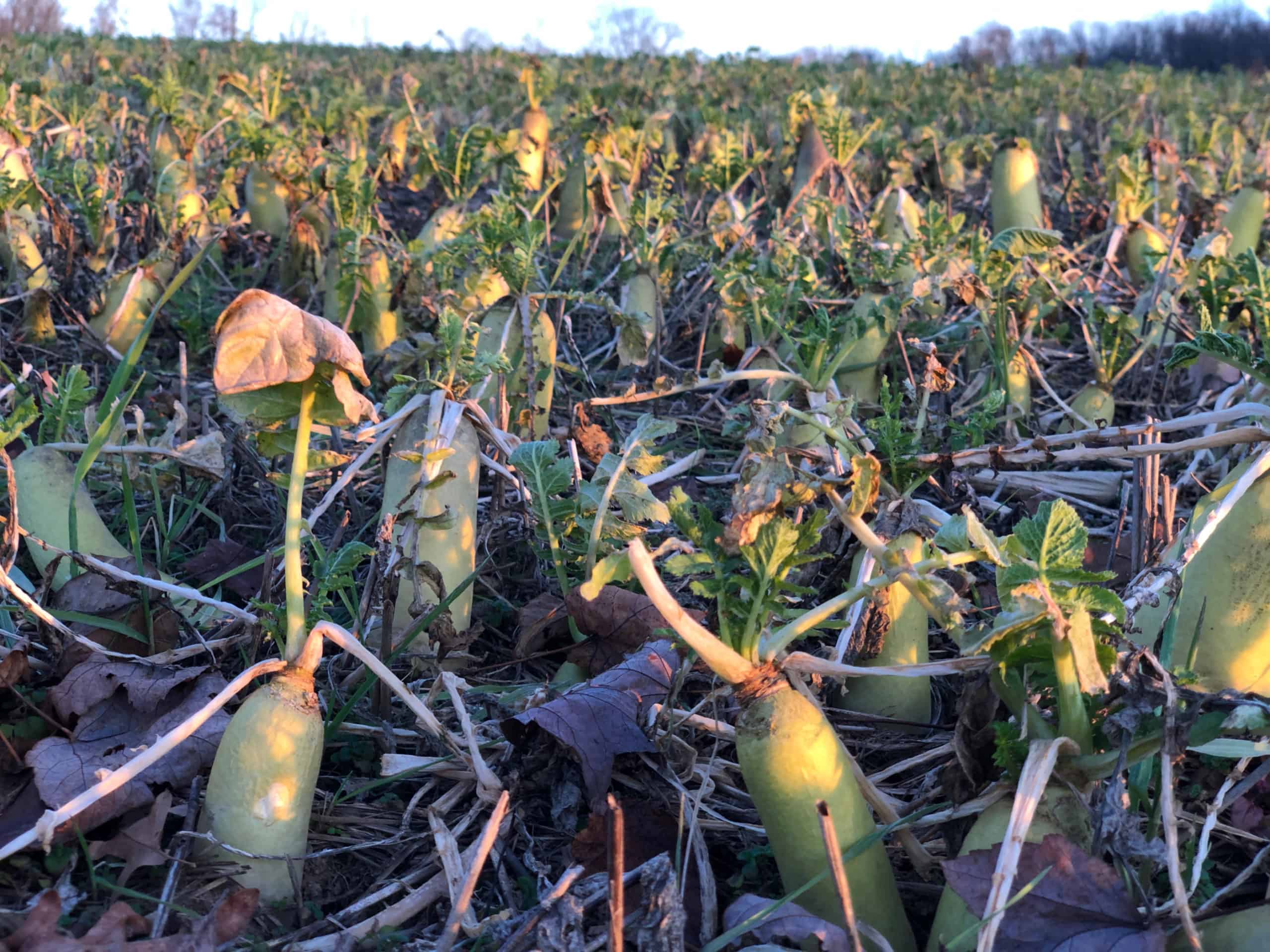Crow’s Nest: Consider the radish
By Daniel Barringer, Preserve Manager.

Photo: Daniel Barringer
You may have noticed crop strips at Crow’s Nest with these odd, bulbous roots poking out of the ground. Some of you may even have collected one as a souvenir, which we wish visitors wouldn’t do. These are a variety of Daikon radish (Raphanus sativus) grown for forage or used as they are here, as a cover crop.
This cultivated variety is called EcoTill (TM) and was developed to add nitrogen to the soil, break up compacted soil, and—when it rots away in place through the winter—allow water to better infiltrate the ground and reduce runoff. The bulbous portion of the root can grow to 24 inches, and a smaller taproot can go down six feet. As it rots it leaves holes in the ground, a process with the nickname “bio-drilling,” improving the soil’s porosity and structure (tilth) and increasing organic matter. These were planted in strips that had previously been in wheat and better prepares the ground for a crop of corn. Soybeans, which also are used to add nutrients to the soil, usually sustain heavy damage from deer at Crow’s Nest. The radishes are also heavily browsed, distracting the deer from nearby corn, but since they aren’t intended to be harvested, there isn’t the economic impact on them that there is on soybeans.
About 180 acres—about 1/4 of Crow’s Nest Preserve—are leased to a local farmer. All farmers on Natural Lands preserves are required to comply with a Conservation Plan prepared by the Natural Resource Conservation Service, which explains why you see crops in contours with grassy waterways and buffers. Our farmer employs no-till soil conservation practices and is using other techniques such as diversifying crops, planting native wildflower strips to attract pollinators, and trying out various cover crops. We hope you enjoy the matrix of natural wild lands (forest, meadow, successional areas) and the working farmland at the preserve, and respect the farmer’s crops.

Photo: Daniel Barringer
